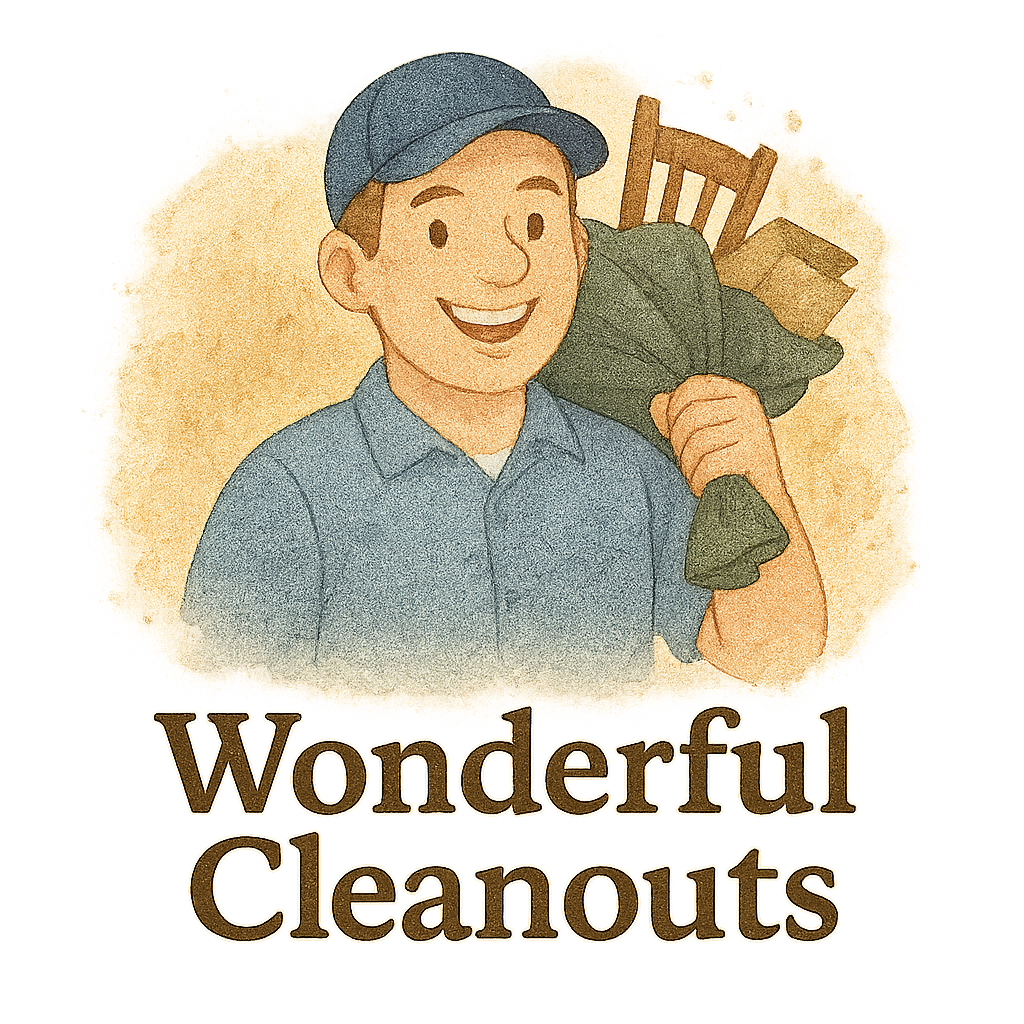Hoarding is more than just clutter—it’s a serious challenge that impacts physical health, mental wellbeing, and overall safety. Tackling a hoarding cleanout isn’t something to rush or take lightly. If you’re preparing for such a task, follow these 10 critical steps for safe hoarding cleanouts to get the job done efficiently and compassionately.
What is Hoarding? Understanding the Basics
Before diving into the cleanup process, it’s essential to understand what hoarding really is. Hoarding disorder involves the persistent difficulty of discarding or parting with possessions, regardless of their actual value. This leads to an accumulation of items that can congest living spaces and create unsafe conditions.
Want to learn more about hoarding? Explore our category on hoarding cleanouts for insights and expert advice.
Why Safe Hoarding Cleanouts Are Essential
Hoarded environments often contain health risks, structural damage, fire hazards, and even biohazards. A safe and strategic approach protects everyone involved—whether you’re a family member, friend, or professional cleanout team.
Step 1: Assess the Situation Thoroughly
Identify the Level of Hoarding
Start by evaluating how severe the hoarding has become. Is it light clutter or full-on wall-to-wall accumulation? The cleanouts you plan will vary greatly based on this.
Consider Safety Hazards
Look for signs of mold, pest infestations, sharp objects, or structural instability. Be honest in your assessment to prepare properly.
Step 2: Create a Compassionate and Realistic Plan
Work With the Hoarder If Possible
If the person is still living there, involve them in planning. Respect and empathy go a long way in reducing emotional distress.
Set Small, Achievable Goals
Tackling the entire home in a day? Not likely. Focus on manageable tasks—like one room at a time or even just clearing a walkway.
Need inspiration? Browse our planning tips to help structure your approach.
Step 3: Assemble the Right Team
Include Professionals When Needed
Sometimes, it’s best to bring in the experts. From junk removal crews to mental health professionals, the right help can be life-changing. See our residential cleanouts for options tailored to homes.
Assign Clear Roles
Ensure everyone knows their responsibilities, whether it’s sorting, hauling, or sanitizing. Clear direction boosts productivity and morale.

Step 4: Gather the Right Tools and Safety Gear
Must-Have Tools for Hoarding Cleanouts
From heavy-duty trash bags to pry bars and shovels, come prepared. Check out our tools guide to see what’s essential.
Protective Gear Checklist
Don’t forget gloves, goggles, N95 masks, and sturdy boots. You’ll be grateful for every bit of protection.
Step 5: Prioritize Safety Above All Else
Identify Structural and Health Risks
Collapsing piles, hidden sharp objects, and mold aren’t just inconveniences—they’re dangers. Evaluate every room before entering.
Use PPE and Ventilation Strategically
Ensure airflow, especially when dealing with old materials or potential biohazards. PPE isn’t optional—it’s your armor.
Discover more about safety practices in cleanouts.
Step 6: Start with the Easy Stuff
Clear Pathways and Entryways First
Creating clear paths can provide instant progress and ease future access.
Remove Trash and Obvious Junk
Toss broken items, rotting food, and anything clearly beyond repair. It builds momentum and confidence.
Step 7: Sort Items Methodically
Use the “Keep, Donate, Toss” System
Simple categories prevent overwhelm. Label bins clearly and sort as you go.
Avoid Getting Emotionally Attached
It’s easy to pause at every photo or trinket. Stay focused. Remember the ultimate goal: a safe, livable space.
Step 8: Deep Clean and Sanitize
Focus on High-Touch Surfaces
Sanitize doorknobs, light switches, and counters to eliminate bacteria and grime.
Use Professional-Grade Cleaners
Don’t skimp on cleaning products. When in doubt, go with what the pros use. See our garage and attic cleanouts for thorough deep-cleaning examples.
Step 9: Dispose of Waste Responsibly
Follow Local Regulations
Not everything can go in the trash. Electronics, batteries, and chemicals require special disposal.
Consider Eco-Friendly Disposal Options
Donate usable items to charity and recycle where possible. It’s good for the planet and reduces landfill use. Check our tips under gear for tools that support responsible cleanouts.
Step 10: Prevent Future Hoarding
Offer Ongoing Support
Stay connected with the person post-cleanout. Encourage therapy, support groups, or follow-up visits.
Encourage Organizational Habits
Introduce shelves, bins, and labels to keep items tidy. Habits matter more than space.
Benefits of Hiring Professional Cleanout Services
Let’s be honest: hoarding cleanouts are tough. That’s why professional services like Wonderful Cleanouts are a game-changer. From estate cleanouts to commercial cleanouts, we’ve seen it all. You don’t have to go it alone.
Internal Resources to Help With Hoarding Cleanouts
Tap into our growing library for cleanout-related topics:
- Hoarding Cleanouts
- Residential Cleanouts
- Office Tips
- Warehouse Organization
- Cleanout Planning
- Useful Tips
Conclusion
Hoarding cleanouts are never easy—but they are possible. With compassion, strategy, and the right support, you can transform chaos into calm. Whether you’re helping a loved one or managing a property, following these 10 critical steps for safe hoarding cleanouts will lead to cleaner, safer living conditions.
FAQs
1. What makes a hoarding cleanout different from a regular cleanout?
Hoarding cleanouts involve extreme clutter, emotional sensitivity, and often unsafe conditions that require a specialized approach.
2. Can I clean out a hoarder’s house alone?
You can, but it’s not advisable. It’s safer and more efficient with a team—and even better with professionals.
3. How long does a hoarding cleanout take?
Anywhere from several days to weeks, depending on the severity and size of the home.
4. What safety gear is essential for hoarding cleanouts?
Gloves, masks, goggles, steel-toed boots, and protective suits are highly recommended.
5. Should I involve a mental health professional?
Absolutely, especially if the hoarder is involved. Their support can make the process much smoother.
6. What if I find something valuable or sentimental?
Set it aside and review it with the owner or family. Not everything is junk, and emotional items deserve careful handling.
7. Is it worth hiring a professional cleanout service?
Yes—especially when you want thorough, efficient results without the stress. Contact Wonderful Cleanouts to get started.

